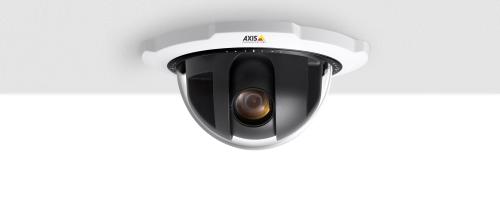Making your community a safer place is often the top priority for those in public safety. You feel a sense of personal and professional responsibility for those that live in your city, and you take your job of protecting and serving them very seriously.
And although every year seems to bring with it a new type of threat, time has also given us incredible technologies that can be used to improve public safety. One of those technologies is wireless cameras.
improve public safety. One of those technologies is wireless cameras.
Wireless cameras essentially allow a person who is walking alone at night in a dangerous area, to not be truly alone. These cameras can be viewed remotely and police officers or other public safety officials can keep “an eye in the sky” for any potential threats, therefore making them more proactive. If you are looking to improve public safety and have your city remain vigilant, here is quick overview of wireless camera technology.
How Do They Work?
Wireless cameras operate via the internet and are often referred to as IP cameras (Internet Protocol). The are strategically deployed throughout the city and are connected via a wireless broadband network to the central control room, where all feeds are viewable and live.
These cameras capture, record, and allow analysis all via a wireless connection.
Why Should We Upgrade Our Cameras?
In general, analog video surveillance cameras are being phased out in favor of wireless IP cameras. These older cameras rely on wired or closed-circuit television cameras (CCTV), which posed the logistical issue that their reach only extends so far. Basically, older cameras are limited by location.
Here are few of the main differences between IP cameras and analog cameras:
Video Capture - Older cameras often produce stagnant, grainy images that are hard to clearly understand. You can see an individual walking down the sidewalk, but the image quality is lacking and you are not able to focus in on his face or clothing as much as you could with a wireless camera. These digital cameras can capture video in much higher quality - not to mention be remotely controlled to zoom in or pan around.
Storage - If you are relying on outdated video cameras, you are probably used to having to watch video footage back via a hard drive, disk, or even a VCR. Not only is this an outdated procedure, but it is also inefficient, which makes a huge difference when working a time-sensitive case. Wireless cameras be viewed remotely and are able to store all video on both hard drives and in the Cloud.
Analytics - Analog video cameras send all information to a central server. This often means you need to be physically in the control room to engage with video analytics. Wireless cameras allow access to data anywhere where this a solid network connection - allowing users to analyze the video data in real-time.
Also, as with any other technology, it is best to upgrade sooner rather than later. Not only does this specific technology improve public safety right away, but finding support for outdated devices like analog cameras becomes harder every year. This is similar to trying to by a standard cell phone in today’s smartphone-centric world.
What are the Key Benefits?
As mentioned above, there are lots of great differences between wireless and analog video systems - so you have a good idea of the benefits newer cameras offer. Here are a few more quick benefits to remember when considering upgrading to wireless cameras:
- Reduce street crime and vandalism
- Be more vigilant during mission-critical communications
- Leverage the technology to find criminals or suspects within a crowd
- Send a message that your city is serious about safety
In a time where many cities are facing shrinking budgets and being asked to do more with less, wireless cameras help patrol the streets and deter crime - all without adding additional officers.


